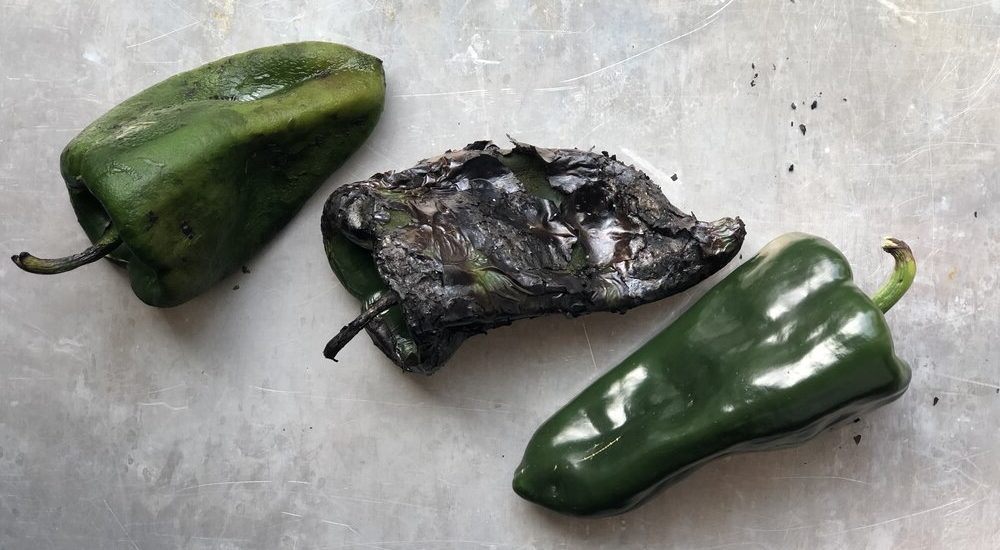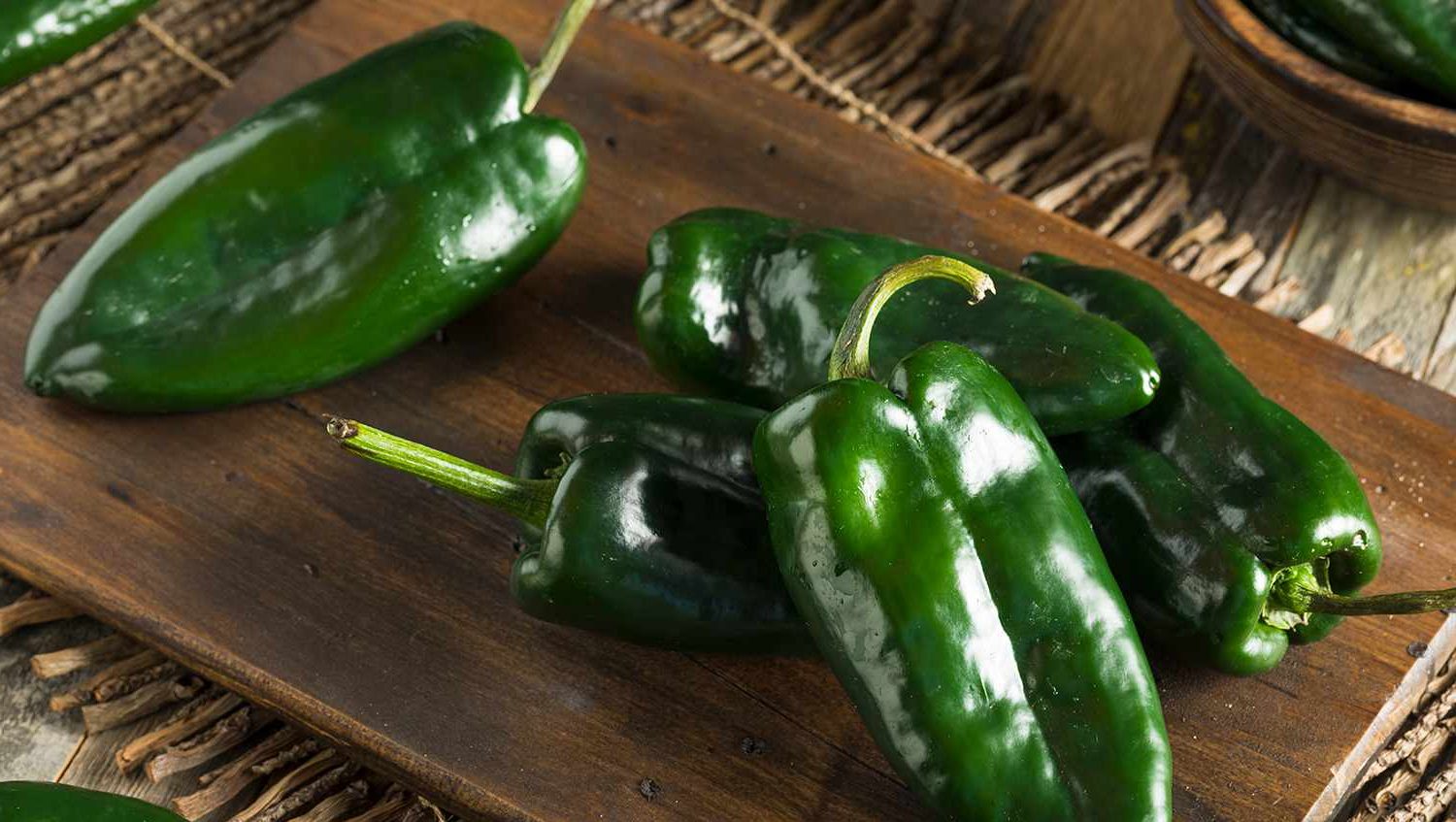Poblano vs Pasilla

People introduce spices and peppers into their foods and recipes for many reasons, these reasons are as many as the number of peppers there are available in the planet. For someone who doesn’t consumed much peppers or isn’t much interested in them, you may not understand but those who are heavily invested in it, the tiniest bit of difference in flavor, aroma, scent, taste or even color matters. For such people the conversation about pasilla vs poblano is important. That is what I would attempt to do in this article, help you compare the two different peppers o you can make your choice to choose from pablano vs pasilla, which one is the best for you.
So without any further ado, let’s dive into the pasilla pepper vs poblano comparison.
What Is Pasilla Pepper?

Pasilla pepper, also known as pasilla chili or chile pasilla, is a type of chili pepper commonly used in Mexican cuisine. The name “pasilla” translates to “little raisin” in Spanish, referring to the pepper’s appearance when dried.
Pasilla peppers are typically medium to large in size and have a long, slender shape with a dark green to almost black color when fresh. They are actually a variety of dried chilaca pepper. The fresh peppers have a mild to medium level of heat, ranging from 1,000 to 2,500 Scoville heat units (SHU).
When dried, pasilla peppers become wrinkled and take on a dark, purplish-black color. Drying intensifies their flavor and adds a deeper, smokier taste. The dried peppers have a rich, earthy flavor with hints of dried fruit, cocoa, and licorice. They are often used in sauces, salsas, and stews to add depth and complexity to the dish.
In Mexican cuisine, pasilla peppers are commonly used in traditional dishes such as mole sauces, enchiladas, and tamales. They can also be rehydrated by soaking them in hot water before use or ground into a powder to make a versatile spice.
What Is Pasilla Pepper Used For?
Pasilla peppers have a versatile range of uses in Mexican cuisine. I’ve listed some of the most common use cases for pasilla peppers:
- Sauce and Salsa: Pasilla peppers are often used as a key ingredient in various sauces and salsas. They add a deep, rich flavor and a touch of heat. Pasilla-based sauces are commonly used in dishes like mole sauce, adobo sauce, and enchilada sauce.
- Stews and Soups: Pasilla peppers can enhance the flavor of stews and soups. They contribute a smoky, earthy taste that complements the ingredients in these dishes. Pasilla peppers are often added to meaty stews like chili or used in traditional Mexican soups such as pozole or tortilla soup.
- Stuffing: Similar to poblano peppers, pasilla peppers can be stuffed with a variety of fillings. After roasting and removing the seeds, they can be filled with cheese, meat, or vegetables, then baked or fried. This preparation is popular in dishes like chiles rellenos.
- Spice Blends and Rubs: Dried pasilla peppers can be ground into a powder and used as a flavorful spice in various spice blends and rubs. They add depth and complexity to dishes like tacos, fajitas, and grilled meats.
- Marinades: Pasilla peppers can be incorporated into marinades for meat or poultry, infusing them with a smoky, slightly spicy flavor. The marinade can be used for grilling, roasting, or braising, imparting a delicious taste to the dish.
- Flavor Enhancer: When rehydrated, pasilla peppers can be added to dishes like rice, beans, or even roasted vegetables to enhance their overall flavor profile. The rehydrated peppers provide a subtle heat and an earthy, fruity taste.
Overall, pasilla peppers are a popular ingredient in Mexican cuisine due to their unique flavor profile. They bring a depth of flavor and a mild to medium level of heat to a wide range of dishes, making them a versatile choice for various culinary applications.
What Is Poblano Pepper?

Poblano pepper, also known as chile poblano, is a mild to medium-sized chili pepper that is widely used in Mexican cuisine. It is named after the Mexican state of Puebla, where it originated. Poblano peppers are one of the most popular chili varieties in Mexico.
When fresh, poblano peppers are dark green in color and have a slightly curved, heart-shaped appearance. They are relatively large and have a thick, fleshy texture. Poblano peppers are known for their mild to medium heat very similar to pasilla pepper above, typically ranging from 1,000 to 2,000 Scoville heat units (SHU). Compared to other chili peppers, they are generally milder, but occasionally a poblano pepper can have a bit of a kick.
One of the most famous uses of poblano peppers is in the traditional Mexican dish called chiles rellenos. In this preparation, the peppers are roasted, peeled, and stuffed with a variety of fillings, such as cheese, meat, or vegetables. They are then typically coated in egg batter and fried until golden and crisp.
Poblano peppers are also used in a range of other dishes, including salsas, soups, stews, and sauces. They have a rich, earthy flavor with subtle fruity undertones. When roasted, their flavor becomes even more pronounced and slightly smoky.
Additionally, when dried, poblano peppers are known as ancho chilies. Ancho chilies have a deep, reddish-brown color and a slightly sweeter and smokier flavor compared to the fresh poblano peppers. They are commonly used in Mexican mole sauces and other dishes where a rich, complex flavor is desired.
What Is Poblano Pepper Used For?
Poblano peppers are widely used in Mexican cuisine and offer various culinary applications. Here are some common use cases for poblano peppers:
- Chiles Rellenos: Poblano peppers are often used for making chiles rellenos, a popular Mexican dish. The roasted and peeled peppers are stuffed with a filling such as cheese, meat, or vegetables, then typically battered and fried until golden. This preparation showcases the mild heat and rich flavor of the poblano pepper.
- Salsas and Sauces: Poblano peppers can be used to create flavorful salsas and sauces. They add a mild to medium level of heat and a distinctive earthy flavor. Poblano-based sauces, such as salsa verde or creamy poblano sauce, are commonly served with tacos, enchiladas, and grilled meats.
- Soups and Stews: Poblano peppers can be added to soups and stews to infuse them with a mild, smoky flavor. They work well in hearty dishes like posole, tortilla soup, or black bean soup, enhancing the overall taste and adding a subtle heat.
- Roasting and Grilling: Poblano peppers are excellent when roasted or grilled. The process of charring the skin gives them a smoky flavor and slightly sweeter notes. Roasted or grilled poblanos can be used as a standalone side dish, added to sandwiches or salads, or incorporated into various recipes.
- Rellenos Enchiladas: Poblano peppers can be used to make rellenos enchiladas. The roasted and peeled poblanos are rolled with a filling, such as cheese or meat, inside tortillas, then topped with sauce and baked until bubbly and golden.
- Toppings and Garnishes: Poblano peppers can be sliced, diced, or chopped and used as toppings or garnishes for various dishes. They add flavor, texture, and a mild heat. Poblano strips can be added to fajitas, tacos, or sandwiches, while diced poblanos work well as a garnish for salads, soups, or grilled meats.
Remember, while poblano peppers are generally milder in heat compared to some other chili peppers, the heat level can vary. It’s always a good idea to taste-test and adjust the quantity of poblano peppers to suit your preferred level of spiciness in a recipe.
From the two sections above, you begin to notice the similarities as well as differences between Pasilla pepper and Poblano pepper. Not only that, but their popular use case. But that is not all, I need to put show a table that accurately highlights the differences between pasilla pepper and poblano peppers. This table would capture their distinct features that makes them different from each other.
Pasilla vs Poblano
| Feature | Pasilla Pepper | Poblano Pepper |
|---|---|---|
| Heat Level | Mild to medium (1,000 to 2,500 SHU) | Mild to medium (1,000 to 2,000 SHU) |
| Fresh Color | Dark green to almost black | Dark green |
| Shape | Long, slender | Slightly curved, heart-shaped |
| Size | Medium to large | Medium to large |
| Flavor | Rich, earthy, hints of dried fruit and cocoa | Rich, earthy, slightly sweet, subtle smokiness |
| Common Use | Sauces, salsas, stews, mole sauces | Chiles rellenos, salsas, soups, stews, sauces |
| Dried Form | Wrinkled, dark purplish-black | Ancho chili pepper (deep reddish-brown) |
| Rehydration | Soaked in hot water before use | N/A (used fresh or dried as ancho chili) |
You should note that the heat level, flavor, and uses of the peppers can vary slightly depending on factors such as growing conditions and individual taste preferences. How exposed or experienced your taste bud is with heat level of food greatly impacts how you respond to heat level of spicy foods.
From the above table, you should be able to decide which of the two peppers is best for you. If you desire the features of pasilla pepper more than you do that of poblano, maybe pasilla pepper is the best for you and you should go for it. But it is never wrong to substitute one pepper for another once in a while.



